Litang Monastery (理塘寺), also known as Changqingchun Ke’er Monastery (长青春科尔寺), was founded in 1580 by the Third Dalai Lama, Sonam Gyatso. It stands as the oldest and largest Gelugpa (Yellow Hat) Tibetan Buddhist monastery in the historical Kham region, often referred to as the “Buddhist Holy Land of Southern Kham.” The name Changqingchun Ke’er translates to “Maitreya Buddha’s Dharma Wheel,” symbolizing the perpetual turning of the Dharma Wheel and the eternal truth.
Covering an expansive area of over 500 acres, the monastery accommodates more than 4,300 monks, with around 800 residing permanently. According to legend, when the Third Dalai Lama, Sonam Gyatso, was passing through Litang during his journey back to Tibet from Amdo (Qinghai), he witnessed a miraculous landscape. The mountains to the north resembled a seated deity holding treasures, while the western peaks looked like a majestic phoenix spreading its wings, and the eastern mountains formed the shape of a reclining elephant. This scene remarkably matched a prophecy made 900 years prior by the Indian master Atisha Dipankara in the “Record of the Disciples’ Inquiries into the Way,” creating a sense of joy and fulfillment.
Impressed by this auspicious landscape, Sonam Gyatso decided to construct the Changqingchun Ke’er Monastery between the mountains that resembled an elephant’s long trunk. The legendary narrative surrounding the creation of Litang Monastery contributed to its widespread fame, earning it the reputation of being one of the three major monasteries in the Tibetan region, alongside the renowned institutions in Lhasa. The saying goes, “Above, there are the three major monasteries of Lhasa; below, there is the Ando Ta’er Monastery; and in the middle, there is the Litang Changqingchun Ke’er Monastery.”
Table of Contents
Basic Information
| Estimated Length of Tour | 1 – 2 hours |
| Ticket Price | Free |
| Opening Hours | 24 hours a day |
| Area | Over 500 acres |
| Number of Monks | About 800 |
Location and Transportation
Litang Monastery is situated in the picturesque town of Litang, which lies gracefully atop the Tibetan Plateau in Garze Tibetan Autonomous Prefecture of Sichuan province, China, near the Cuoka Lake. Nestled at an elevation of approximately 4,014 meters (13,169 feet) above sea level, this remote and serene location provides a breathtaking backdrop for the monastery’s spiritual pursuits.
Litang Monastery is only 1.4 kilometers to the northeast of the town center. But unfortunately, there is no bus route leading there. Tourists have to walk or take a taxi to cover the distance.
Highlights of Litang Monastery
Architectural Splendor

Litang Monastery’s architecture is a masterful fusion of Tibetan design and spiritual symbolism. Its towering structures, adorned with intricate artwork and vibrant prayer flags, reflect the essence of Tibetan Buddhism. The main assembly hall boasts ornate woodwork and detailed murals depicting Buddhist teachings. Stupas and pagodas punctuate the monastery grounds, embodying spiritual significance. The complex’s layout is thoughtfully organized around courtyards and prayer areas, fostering an atmosphere of meditation and devotion. This architectural marvel, set against the backdrop of the Tibetan Plateau’s sweeping vistas, creates a space where earthly and spiritual beauty harmoniously intertwine.
Spiritual Retreat
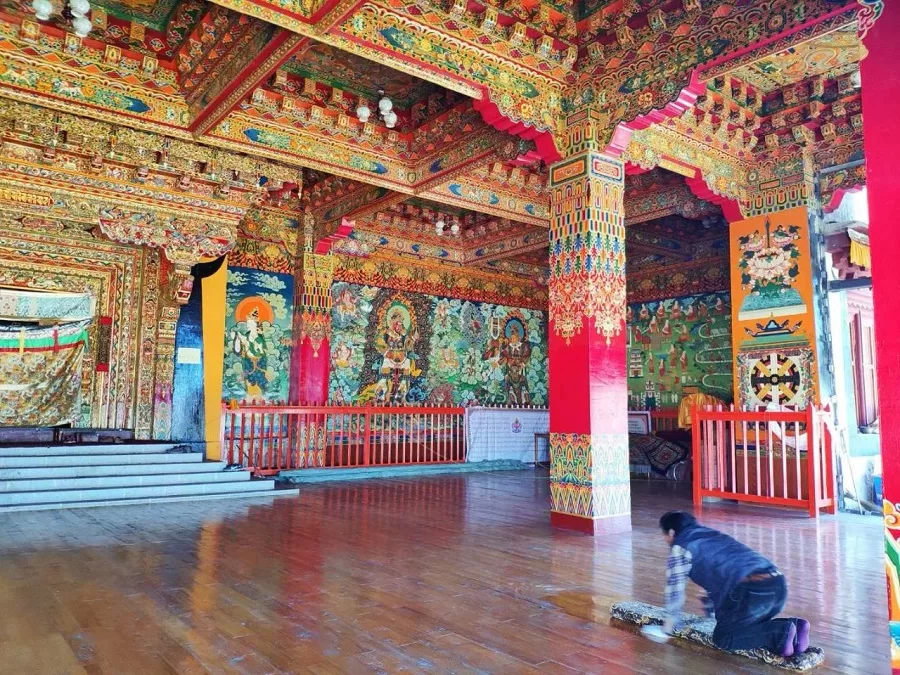
Litang Monastery, a serene sanctuary atop the Tibetan Plateau, beckons as a spiritual retreat. Amidst breathtaking landscapes, it offers solace for seekers to delve within. Monks’ chants mingle with mountain breezes, guiding introspection. Meditative spaces and prayer halls echo with ancient wisdom, nurturing inner reflection. Here, one can disconnect from worldly clamor, fostering a profound connection to Tibetan Buddhist teachings. Litang’s tranquil ambiance and devout atmosphere invite all to embark on a transformative journey, nurturing the soul and rejuvenating the spirit in the embrace of its sacred haven.
Religious Ceremonies
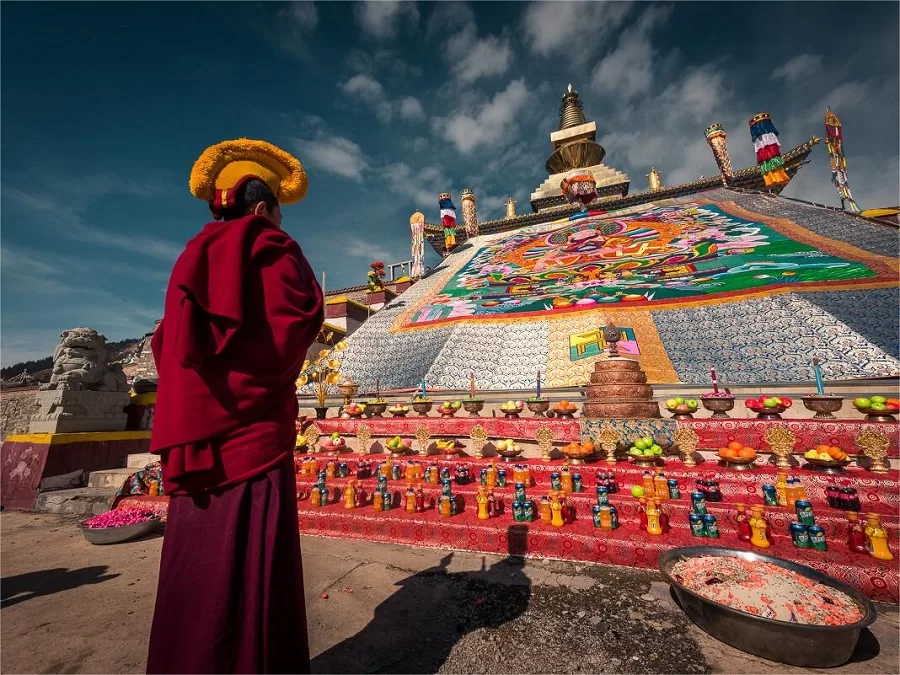
Litang Monastery hosts captivating religious ceremonies that resonate with centuries of Tibetan Buddhist tradition. Monks adorned in saffron robes engage in sacred rituals, filling the air with chants and the scent of incense. The rhythmic beating of drums and clang of bells accompany the recitation of ancient scriptures, invoking blessings and enlightenment. Colorful prayer flags flutter, carrying aspirations to the heavens. Ceremonies like Tshechu festival and Losar usher in joyous celebrations, uniting locals and pilgrims in spiritual reverence. Litang’s hallowed halls become a gateway to experience the profound essence of Tibetan Buddhism, a testament to the enduring heritage of faith and devotion.
Cultural Exchange
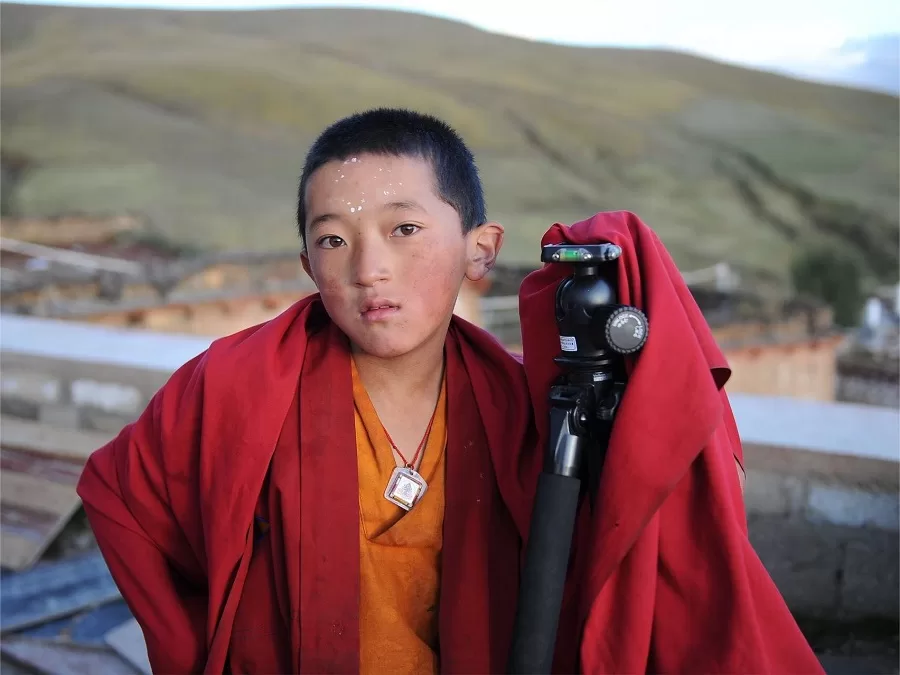
Litang Monastery serves as a captivating hub for cultural exchange, bridging hearts and minds in a tapestry of shared wisdom. Amidst its serene courtyards, visitors engage with dedicated monks, immersing themselves in the rhythms of monastic life. Conversations weave threads of Tibetan Buddhist philosophy, fostering mutual understanding. Traditional rituals, vibrant festivals, and artistic showcases create a vibrant canvas for cross-cultural exploration. As sunlit peaks embrace the monastery, diverse perspectives converge, enriching souls with the beauty of unity amidst diversity. Litang’s sacred grounds offer a profound crossroads where cultures intertwine, nurturing harmony and enlightenment for all who seek its embrace.
Local Artistry
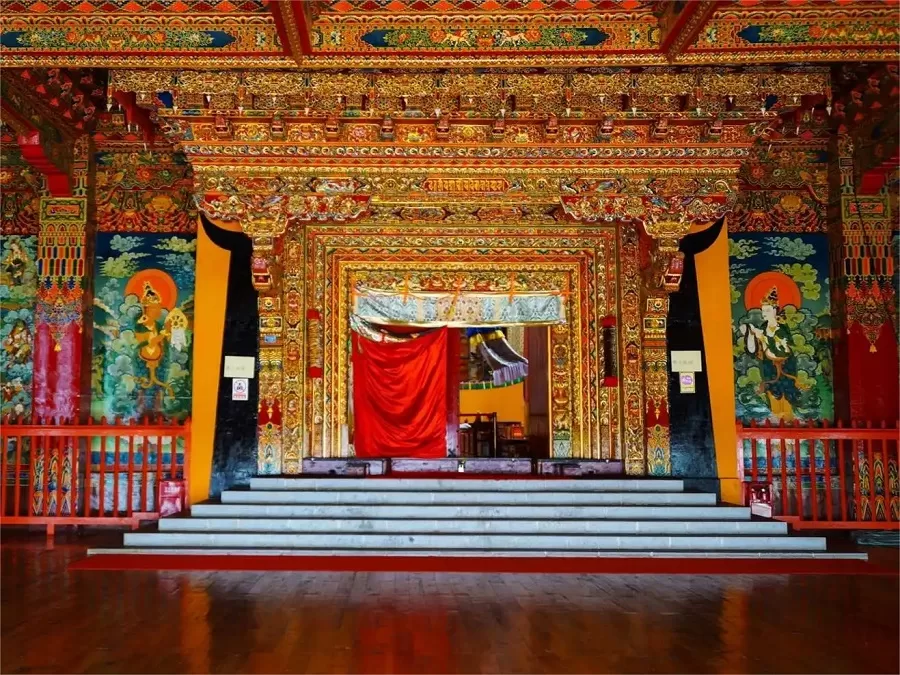
Litang Monastery is an exquisite gallery of local artistry, preserving and celebrating the rich heritage of Tibetan craftsmanship. Its sacred halls are adorned with intricate thangka paintings, vivid depictions of Buddhist deities and teachings. Sculptures carved with precision evoke spiritual reverence, while intricate woodwork narrates ancient tales. Each stroke of art reflects generations of devotion, mirroring the monastery’s profound spirituality. The vibrant colors and delicate details form a tapestry of cultural expression, inviting visitors to embark on a visual journey through the heart of Tibetan traditions.
Gateway to the Plateau

Litang Monastery stands as a majestic gateway to the captivating Tibetan Plateau. Perched amidst the lofty peaks, it welcomes travelers with open arms, inviting them to traverse the spiritual and geographical heights of the region. Beyond its revered halls lies a vast expanse of nomadic landscapes and timeless traditions. As prayer flags flutter in the crisp plateau air, the monastery becomes a portal to ancient cultures and breathtaking vistas. Litang’s profound spirituality mirrors the awe-inspiring grandeur of the plateau, serving as a beacon for those seeking to embark on a transformative journey through both the soul and the majestic highlands that stretch beyond.
Tour Tips
Altitude Preparations: Litang is situated at a high altitude, so acclimatization is essential. Spend a day or two in Litang or a nearby area before visiting the monastery to avoid altitude sickness.
Best Time to Visit: The ideal time to visit is during the warmer months from May to September when the weather is relatively mild and the landscape is lush. However, be prepared for varying weather conditions, as temperatures can drop significantly, especially at night.
Cultural Sensitivity: The monastery is a sacred place of worship. Dress modestly and respectfully, covering your shoulders and knees. Avoid loud conversations or disruptive behavior in prayer areas.
Local Customs: Engage in cultural exchange with the monks and local Tibetans respectfully. Greet people with a friendly “Tashi Delek” (hello) and be open to learning about their way of life.
Horse Racing Festival: If your visit coincides with the annual Litang Horse Racing Festival (usually in August), it’s a fantastic opportunity to witness traditional Tibetan culture and festivities.





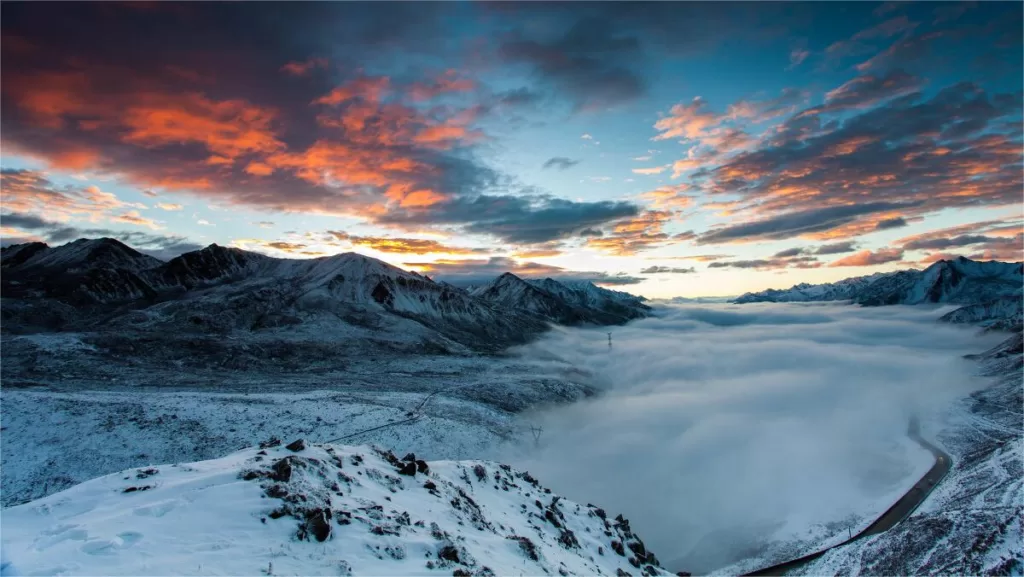



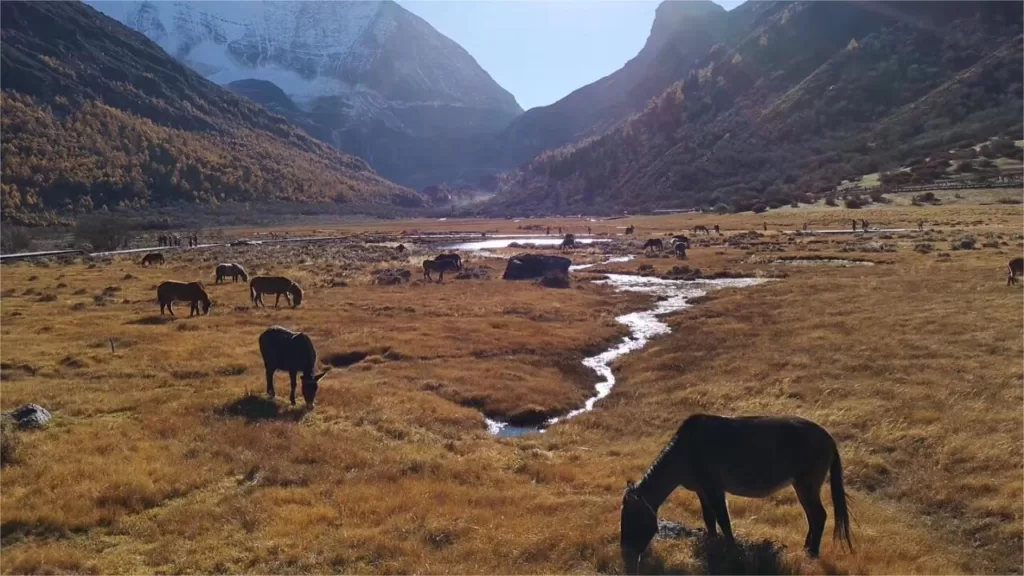

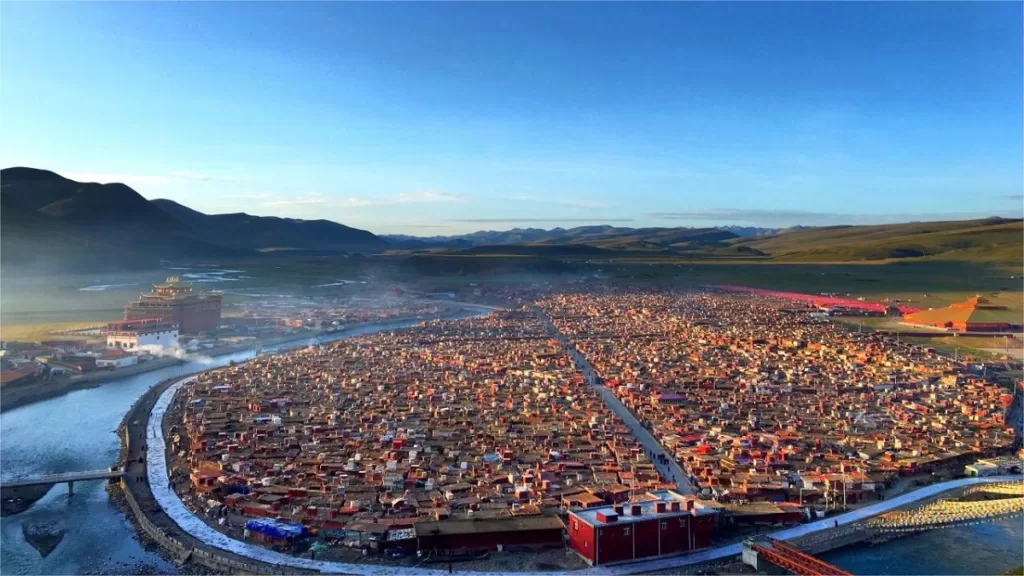
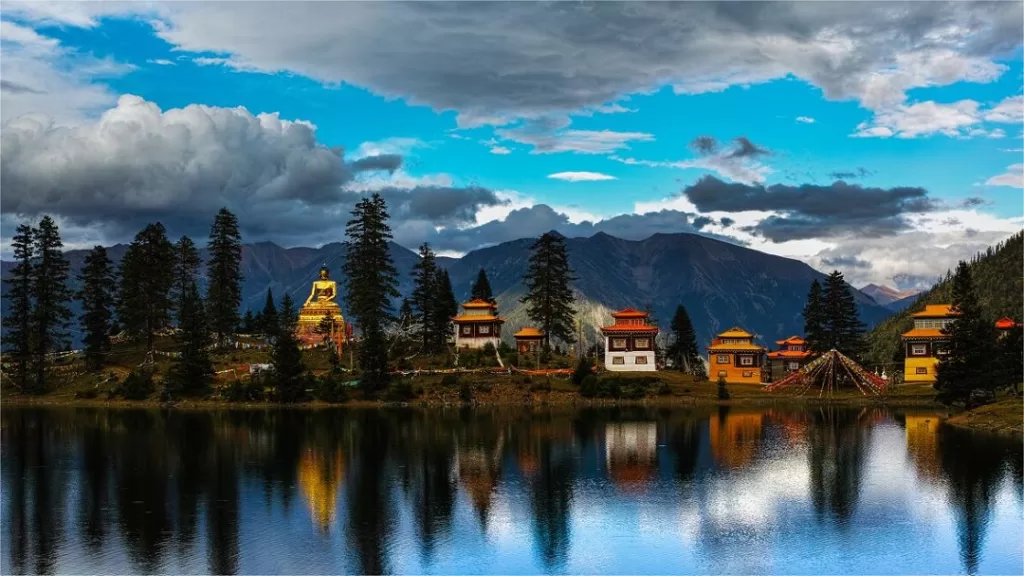


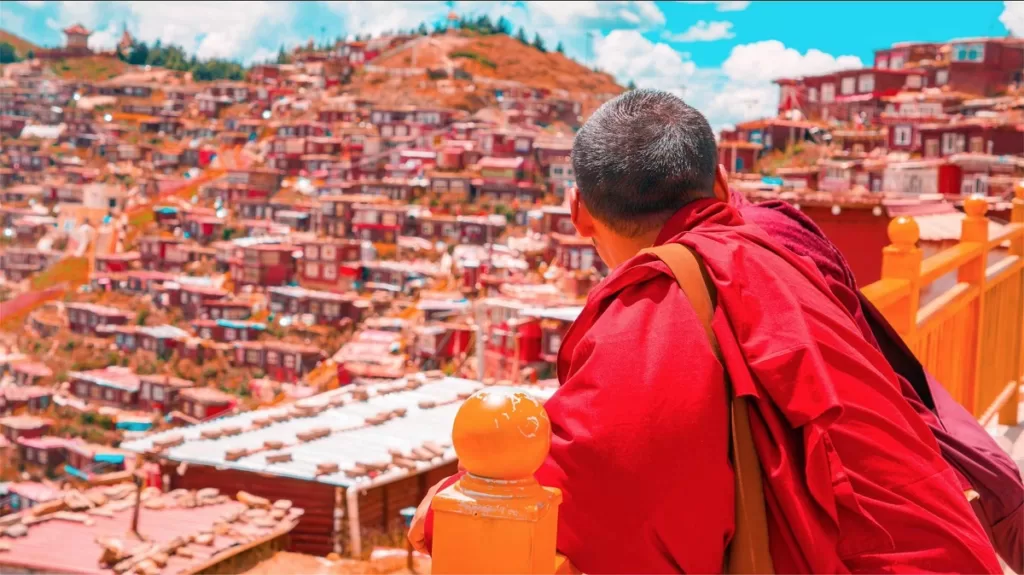
0 Comment